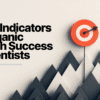The Dental AI Receptionist Revolution: Why Your Team will Love This Game-Changing Technology
Look, we get it. When someone mentions the words “AI receptionist” in the same sentence as your dental practice, your first thought probably isn’t excitement. Maybe it’s more like, “Great, another tech company trying to sell me a robot replacement for my amazing front desk team.”
But here’s the thing—and we’ve been in dental marketing for over 15 years, so trust us on this—dental AI receptionists aren’t coming for your team’s jobs. They’re coming for the stuff that drives your team absolutely crazy. You know, like that 7 PM phone call from someone with a toothache who hangs up when they hit voicemail (spoiler alert: they’re calling your competitor next).
We’re talking about technology that’s so advanced, it actually makes your human team more valuable, not less. Think of it like the difference between doing root canals with hand files versus rotary instruments. The technology doesn’t replace your clinical skills, it amplifies them.
Table of Contents
- Why Your Practice is Bleeding Money Every Time Someone Calls
- The Great Voicemail Disaster (And Why It’s Killing Your Revenue)
- Why Your Old Phone Tree is Making Patients Hate You
- How AI Receptionists Actually Schedule Appointments (It’s Pretty Amazing)
- Smart Call Routing That Makes Your Team’s Life Easier
- The Truth About AI vs. Your Amazing Human Team
- 24/7 Coverage That Never Calls in Sick
- Web Chat That Actually Converts (Not Like Those Awful Bots)
- AI vs. Outsourced Agents (Spoiler: AI Wins)
- The Voice Technology That’ll Make You Do a Double-Take
- The ROI That’ll Make Your Accountant Smile
- How AI Saves Your Hygiene Department (And Your Sanity)
- The Future is Here (And It’s Actually Pretty Cool)
- Ready to Join the Revolution?
- FAQ: Your Burning Questions, Answered
The Crisis Your Practice is Facing (That Nobody Talks About)
Here’s a stat that’s going to make you wince: your dental practice is missing between 25-35% of incoming phone calls. Every. Single. Day.
You might be thinking, “Not my practice, we’ve got this handled.” But here’s the reality: this happens to everyone. During busy hours when your front desk is juggling three patients, a insurance call, and someone asking about whitening costs. During lunch breaks. After hours when that emergency call comes in at 8 PM.
Conservative estimates show this represents $150,000 to $200,000 in missed revenue annually for the average practice. Let that sink in for a second. That’s not monopoly money, that’s real revenue walking out the door because someone couldn’t get through.
But here’s where dental AI receptionists change the entire game…
1) Why Your Practice is Bleeding Money Every Time Someone Calls
Picture this scenario (because we guarantee it happened in your practice this week):
Tuesday, 6:30 PM: Sarah’s been dealing with tooth pain all day. She finally gets home from work, the kids are fed, and she has five minutes to call about that pain that’s been driving her crazy. She dials your number, ready to schedule an appointment, and…she gets voicemail.
What happens next?: Sarah doesn’t leave a message (75% of people don’t). Instead, she Googles “emergency dentist near me” and calls the first practice that answers. Your competitor just gained a patient, and you lost $3,000+ in lifetime value.
This isn’t a hypothetical. This is happening right now while you’re reading this article.
The Modern Patient Reality Check:
- Millennials and Gen Z expect immediate responses (not tomorrow, not next hour – NOW)
- 87% of patients who hit voicemail never call back
- Your competition is probably answering their phones (or using AI to do it)
- Emergency calls happen when YOU’RE not working, but the pain doesn’t wait
Enter the Dental AI Receptionist
Imagine if Sarah called and heard this instead:
AI Receptionist: “Good evening, this is Smile Dental. Hi Sarah! It’s great to hear from you. How can I help you today?”
Sarah: “Oh wow, hi! I’m surprised you recognized my voice!”
AI Receptionist: “Of course! I see your birthday is coming up next week—happy early birthday! We actually have a special birthday offer for you: 20% off our professional teeth whitening treatment. But I also noticed from your last visit that Dr. Johnson wanted to follow up about some discomfort you mentioned with your upper left molar. How has that been feeling?”
Sarah: “That’s so thoughtful, thank you for the birthday offer! And yes, actually, that’s exactly why I was calling. The tooth pain has gotten worse over the past few days.”
AI Receptionist: “I’m sorry to hear that, Sarah. Dr. Johnson was hoping we could get you back on the schedule soon to address that concern. Let me check our earliest availability to make sure we can help you out as quickly as possible. We have an opening tomorrow at 10:30 AM, or if that’s too soon, we also have Thursday at 2:15 PM. Which would work better for you?”
That’s not science fiction. That’s where this is going. Custom AI phone receptionists are integrated with the practice management system and can access data and pull it into the conversation. The agent recognized Sarah’s phone number, accessed her patient history, offered personalized services, and booked her appointment all while you were at home having dinner with your family.
2) The Great Voicemail Disaster (And Why It’s Killing Your Revenue)
Let’s talk about the elephant in the room: voicemail is officially dead (it just doesn’t know it yet).
We’ve been tracking this trend for the last couple of years, and the numbers are brutal. Here’s what’s really happening when patients hit your voicemail:
The Voicemail Reality Check
| What You Think Happens | What Actually Happens |
| Patients leave detailed messages | 75% hang up immediately |
| People call back later | 87% never call again |
| Messages provide good information | Most are incomplete or unclear |
| It’s a professional solution | Patients see it as outdated and frustrating |
| You’ll call them back quickly | They’ve already found another dentist |
The Modern Patient Expectation:
- Immediate responses to health concerns
- Real-time appointment scheduling
- Answers to specific questions (not just “call us back”)
- 24/7 availability (pain doesn’t work business hours)
Voicemail vs. Dental AI Receptionist: The Ultimate Showdown
| Feature | Traditional Voicemail | Dental AI Receptionist |
|---|---|---|
| Patient Response & Engagement | 25% leave messages, 75% hang up immediately | 95% complete interactions with natural conversation |
| Immediate Help & Support | Zero assistance – patients wait and worry | Instant responses, scheduling, and problem resolution |
| 24/7 Availability & Capability | Records messages only with no interaction | Full conversational assistance and appointment booking |
| Appointment Scheduling | Impossible – requires callback during business hours | Real-time scheduling with direct PMS integration |
| Information Gathering & Assessment | Limited to what patients remember to say | Systematic collection with intelligent emergency triage |
| System Integration & Workflow | No integration – manual callback processes required | Direct practice management system connectivity and automation |
| Staff Burden & Follow-up | Hours of callback time and phone tag | Minimal staff involvement with comprehensive handoff notes |
| Patient Experience & Satisfaction | Frustrating, impersonal, and anxiety-inducing | Natural, helpful conversations that build trust |
| Revenue Impact & Business Growth | Massive missed opportunities and competitor loss | Measurable increases in bookings and patient retention |
| Professional & Cost Efficiency | Outdated with hidden costs of lost business | Modern with eliminated missed revenue |
The Bottom Line: If you’re still using voicemail as your after-hours solution, you’re essentially hanging a “Closed” sign on your front door while your competitors are welcoming patients with open arms.
3) Why Your Old Phone Tree is Making Patients Hate You
You know that phone system you have that prompts the user to press 1 for new patients, 2 for existing patients, 3 for billing, and somehow never seems to get to a human? Yeah, that’s got to go.
The Patient Experience with Traditional Phone Trees:
- Call practice with urgent concern
- Navigate confusing menu options
- Get stuck in loop trying to find right department
- Finally reach voicemail after 5 minutes
- Hang up frustrated and call competitor
The Hidden Problem: Those phone trees were designed for YOUR convenience, not your patients’. They’re supposed to route calls efficiently, but they often just create barriers between patients and the help they need.
Why AI Conversation is Different
Instead of forcing patients to guess which button matches their concern, AI receptionists engage in natural conversation:
Patient: “Hi, I’m having some pain in my back tooth and I’m not sure if I need to come in right away or if it can wait.”
AI: “I’m sorry to hear you’re experiencing discomfort. I’d be happy to help you figure out the best next step. Can you tell me a bit more about the pain? Is it constant or does it come and go?”
See the difference? No menus, no button pressing, just helpful conversation that actually addresses the patient’s concern.
The Advanced Capabilities:
- Understands complex, multi-part questions
- Adapts conversation flow based on patient responses
- Provides personalized recommendations
- Handles interruptions and clarifications naturally
- Maintains context throughout the entire conversation
This isn’t just better technology, it’s better patient care.
4) How AI Receptionists Actually Schedule Appointments (It’s Pretty Amazing)
Here’s where things get really interesting. Traditional phone systems create frustrating bottlenecks where patients can’t actually do anything during the call. They can leave information, sure, but they can’t solve their problem.
The Old Way (That Drives Everyone Crazy):
- Patient calls with tooth pain
- Gets sent to voicemail
- Leaves incomplete message
- Waits for callback during business hours
- Plays phone tag for 2-3 attempts
- Finally schedules appointment (maybe)
- Total time to resolution: 24-48 hours
The AI Way (That Actually Works):
- Patient calls with tooth pain
- AI immediately engages in natural conversation
- Assesses urgency and gathers relevant information
- Checks real-time availability in your practice management system
- Books appropriate appointment considering provider preferences
- Sends confirmation and pre-appointment instructions
- Total time to resolution: 3-5 minutes
But Here’s What Makes It Really Special:
Modern dental AI receptionists don’t just take appointments, they understand your practice. They know that Dr. Smith prefers to see new patients on Tuesdays and Thursdays. They understand that hygienist appointments need different time blocks than restorative work. They can coordinate complex conversations.
Real Integration Means Real Results:
- Direct connection to your practice management system
- Real-time schedule visibility and booking
- Automatic confirmation and reminder workflows
- Insurance information gathering
- Patient history access for personalized service
The technology has reached the point where patients often forget they’re talking to an AI system. It’s that natural and that helpful!
5) Smart Call Routing That Makes Your Team’s Life Easier
Here’s something that drives us crazy about traditional phone systems: they treat every call the same. Whether it’s someone asking about office hours or a patient with a dental emergency, the call gets dumped on whoever picks up the phone.
The Old Way (That Makes Everyone Miserable):
- Phone rings during procedure
- Team member interrupts patient care to answer
- Caller has basic question that could be handled by anyone
- Clinical time is lost, patient experience suffers
The AI Way (That Actually Makes Sense):
When a patient calls asking to speak with “Alyssa in billing,” the AI doesn’t just blindly transfer the call. Instead it:
- Gathers Context: “I’d be happy to connect you with Alyssa. Can you tell me what this is regarding so I can let her know?”
- Assesses Urgency: Determines if this needs immediate attention or can be scheduled as a callback
- Checks Availability: Knows Alyssa’s schedule and current patient commitments
- Routes Intelligently:
- If Alyssa’s available: Transfers with full context
- If she’s busy: Schedules specific callback with detailed notes
- If it’s something the AI can handle: Resolves immediately
The Game-Changing Benefits
For Your Team:
- No more interruptions during patient care
- Context provided for every transferred call
- Routine questions handled automatically
- Focus on high-value interactions
For Your Patients:
- Immediate assistance for routine questions
- No phone tag for callback requests
- Always connected to the right person for their specific need
- Faster resolution of concerns
Real Example: Patient calls asking about insurance coverage for a crown. With a traditional system, the team member stops what they’re doing, looks up insurance, and explains benefits. Alternately, the AI system immediately accesses insurance details, provides comprehensive coverage information, and offers to schedule consultation if patient wants to proceed. No more missed phone calls or stolen time from vital team members.
The AI learns your team’s preferences and communication patterns over time, becoming increasingly effective at matching patient needs with the right team member at the right time.
6) The Truth About AI vs. Your Amazing Human Team
One of the most frequent questions we receive about dental receptionists is this: “Is this AI thing going to replace my front desk team?”
The short answer: Absolutely not. (And anyone telling you otherwise is either lying or selling you the wrong solution.)
Here’s the reality: Your team is the heart and soul of your practice. They’re the ones who hold nervous patients’ hands, navigate complex insurance situations with empathy, and remember that Mrs. Johnson always asks about her grandkids. AI can’t do that. AI shouldn’t do that.
What AI is incredible at:
- Answering the same 20 questions you get every day
- Scheduling routine appointments at 10 PM
- Handling information requests
- Triaging calls based on urgency
- Capturing leads when your team is busy
What Your Human Team is incredible at:
- Building genuine relationships with patients
- Handling complex emotional situations
- Making clinical judgment calls
- Providing empathy and reassurance
- Solving unique problems that require creativity
The Partnership Model That Actually Works
Think of AI receptionists like the best practice management software you’ve ever used. It doesn’t replace your team, it makes them superhuman.
Before AI: Your front desk spends 30% of their time on routine, repetitive tasks After AI: Your front desk spends 30% of their time on high-value patient relationship building
The AI handles the routine stuff, and your team handles the important stuff. That’s not replacement, that’s enhancement.
7) 24/7 Coverage That Never Calls in Sick
Let’s talk about something that keeps practice owners up at night: coverage. Your front desk team deserves lunch breaks, vacation time, and sick days. But dental emergencies? They don’t respect your office hours.
The 3 AM Toothache Scenario:
- Traditional Practice: Patient suffers until morning, might go to ER, or calls competitor
- AI-Enabled Practice: Patient gets immediate assessment, appropriate guidance, and first-available appointment booking
The Weekend Emergency Reality:
Your AI receptionist doesn’t just take messages on weekends, it provides actual help. It can:
- Assess whether the situation needs immediate emergency care
- Provide appropriate home care instructions for manageable discomfort
- Schedule the first available appointment when offices reopen
- Connect truly urgent cases with your emergency contact protocol
But Here’s What Makes It Really Valuable:
The AI isn’t just working weekends, it’s optimizing your Monday morning. Instead of coming in to 25 voicemails of varying urgency, you come in to:
- A prioritized list of appointments already scheduled
- Clear notes about each patient’s concern
- Emergency cases already triaged and handled
- Your schedule optimized for the week ahead
The Competitive Advantage: While your competitors are losing weekend emergencies to the “we’re closed” voicemail message, you’re building relationships with new patients and providing exceptional service to existing ones.
8) Web Chat That Actually Converts (Not Like Those Awful Bots)
Outdated webchat services are a lot like phone tree systems. If you’ve ever visited a website and had to deal with one of those terrible chatbots that makes you want to throw your computer out the window, we feel your pain. Those old-school bots were programmed with about as much personality as a dental X-ray machine.
The Old Chatbot Experience:
- “Click here for services, Click here for appointments, Click here for…”
- Zero understanding of actual questions
- Endless loops with no real help
- Patients giving up and leaving your website
The New AI Chat Experience:
- Natural conversation about specific concerns
- Real-time appointment availability
- Detailed service information
- Instant insurance verification assistance
- Seamless handoff to human team when needed
Why Modern AI Chat Actually Works
It Understands Intent: When someone types “do u guys do invisaline?” (yes, with the creative spelling), the AI understands they’re asking about Invisalign treatment. It gets the intent behind the words, even when the words aren’t perfect.
It Provides Real Value: Instead of just saying “call us,” the AI can provide treatment timelines, specials, insurance coverage information, and available appointment times.
It Qualifies Leads: By the time someone finishes a chat conversation, you know their treatment interest, urgency level, insurance status, and they’ve been scheduled in your PMS. That’s gold for your front desk team.
The difference is night and day. Patients actually enjoy the experience of AI dental webchat instead of being frustrated by it.
9) AI vs. Outsourced Human Agents (Spoiler: AI Wins)
A lot of practices use outsourced call centers to handle after-hours calls. And look, it’s better than voicemail. But it’s like comparing a bicycle to a Tesla—they both get you from point A to point B, but the experience is dramatically different.
The Outsourced Agent Reality
What You’re Getting:
- Basic message taking and appointment scheduling
- Agents with limited knowledge about your specific practice
- Inconsistent service quality depending on who answers
- Monthly fees that add up quickly
- Training requirements every time they hire new people
What You’re Missing:
- Deep knowledge about your services and procedures
- Integration with your practice management system
- Consistent representation of your brand and values
- 24/7 availability without shift changes and handoffs
Outsourced Human Agents vs. Dental AI Receptionist: The Real Comparison
| Factor | Outsourced Live Agents | Dental AI Receptionist |
|---|---|---|
| Response Time & Knowledge Access | 20-60 seconds to access limited scripts and basic information | Instantaneous access to unlimited practice-specific data |
| Training & Consistency | Ongoing training required with variable service quality | One-time setup with high-quality service every time |
| Insurance & Procedure Knowledge | Basic coverage verification and surface-level treatment understanding | Complete knowledge of insurance protocols and all practice services |
| Sales Performance & Framework Adherence | Generic scripts with inconsistent application | Perfect adherence to your proven sales frameworks every time |
| Daily Performance & Mood Impact | Impacted by the human agents personality | True 24/7 availability with zero downtime |
| Cost Structure & ROI | Monthly fees plus hidden costs from quality inconsistencies | Predictable costs with measurable ROI and revenue capture |
| Scalability & Peak Capacity | Requires hiring additional agents for busy periods | Handles unlimited concurrent calls without additional costs |
| Brand Representation | Variable interpretation of practice values and messaging | Consistent brand voice and messaging every single interaction |
| Integration & Workflow | Limited system connectivity requiring manual processes | Direct practice management system integration with automated workflows |
The Game-Changer: While human agents need time to look up information about your practice policies, insurance details, or specific procedures, AI agents have instantaneous access to everything. Every protocol, every fee schedule, every insurance nuance—it’s all there immediately.
The Human Factor: Here’s the thing about outsourced agents—they’re human beings with good days and bad days. The agent answering your calls at 9 AM on Monday morning might be energetic and helpful. The same agent at 11 PM on Friday night? Maybe not so much. AI maintains the same enthusiasm and professionalism whether it’s the first call of the day or the thousandth.
10) The Voice Technology That’ll Make You Do a Double-Take
Okay, we need to prepare you for this because it’s honestly a bit mind-blowing. Are you sitting down? We’ll wait.
The voice technology in modern AI receptionists has reached the point where patients regularly forget they’re talking to an AI system.
It’s Not Just Text-to-Speech Anymore:
These systems understand emotional nuances. When a patient sounds anxious about an upcoming procedure, the AI adjusts its tone to be more reassuring. When someone’s excited about their new smile, it can match their enthusiasm. It’s like having a team member who’s always having the perfect day.
The Technical Magic Behind the Voice:
- Real-time emotion detection and appropriate response
- Natural conversation flow with interruptions and clarifications
- Context awareness that carries throughout the conversation
- Personality consistency that matches your practice brand
What Patients Are Saying: “I called after hours expecting to leave a voicemail, and ended up having a complete conversation about my treatment options. I honestly didn’t realize it was an AI until the system mentioned it at the end of the call. It was more helpful than some human receptionists I’ve talked to.” Jennifer M.
The Continuous Improvement Factor: The AI doesn’t just maintain consistent quality, it gets better over time. Conversations are used to teach the AI about your practice’s communication style, patient preferences, and effective ways to handle different situations.
This isn’t the robot voice from science fiction movies. This is natural, conversational, and genuinely helpful communication that builds trust and rapport with your patients.
11) The ROI That’ll Make Your Accountant Smile
Let’s talk numbers, because I know that’s what you really want to cover. What’s this actually going to do for your bottom line?
The Missed Call Crisis (That’s Costing You a Fortune):
- Average practice misses 25-35% of incoming calls
- Conservative estimate: $150,000-$200,000 in missed annual revenue
- That’s not potential revenue—that’s money walking out the door
The AI Solution ROI: Based on real data from practices using Annie AI (our dental AI receptionist solution), here’s what we’re seeing:
- 50 – 1000 calls picked up by the AI receptionist based on the size of the practice
- $5,000-$75,000 in scheduled monthly revenue, based on the size of the practice
- 40% – 65% call conversion, meaning the call was fully processed by the agent
- 100% – 200% increase in scheduled appts from marketing campaigns
- 5% – 10% conversion on hygiene recare
But Here’s Where It Gets Really Interesting:
The ROI compounds over time because AI receptionists don’t just capture missed calls, they optimize everything:
Revenue Optimization Features:
- Updates new patient data from the conversation into the PMS
- Implements proven sales frameworks consistently
- Reduces no-shows through better communication
- Captures leads from web traffic 24/7
- Maximizes hygiene department utilization
Cost Reduction Benefits:
- Eliminates overtime pay for front desk coverage
- Reduces outsourced answering service fees
- Minimizes lost productivity from phone interruptions
- Decreases staff turnover from call-handling stress
The math is pretty compelling. Most practices see positive ROI within 60-90 days.
12) How AI Saves Your Hygiene Department (And Your Sanity)
Let’s talk about the engine of your practice profitability: your hygiene department. If you’ve been in practice for more than five minutes, you know that keeping your hygiene schedule full is absolutely critical to practice success.
The Hygiene Department Reality Check:
- Should account for at least 30% of total practice revenue
- 75% of restorative treatment is discovered during hygiene visits
- Every unfilled hygiene hour represents lost revenue and missed treatment opportunities
The Revenue Impact of Hygiene Schedule Gaps
The difference in success between a practice with a full hygiene schedule versus one with gaps is absolutely massive.
Industry benchmarks recommend maintaining only 8-10% open time in your hygiene schedule. But here’s what we see in reality; many practices have 20-25% underutilized hygiene time. That small difference has enormous financial implications:
| Hygiene Utilization | Annual Practice Revenue | Hygiene Revenue | Additional Treatment Revenue | Lost Opportunity |
|---|---|---|---|---|
| 80% Utilization | $800,000 | $240,000 | $320,000 | Baseline |
| 85% Utilization | $850,000 | $255,000 | $340,000 | Missing $50K |
| 90% Utilization | $950,000 | $285,000 | $380,000 | Missing $150K |
| 95% Utilization | $1,050,000 | $315,000 | $420,000 | Missing $250K |
Based on $1M average practice revenue with hygiene representing 30%
The Hidden Problem Nobody Talks About:
Your team HATES making hygiene recall calls. It’s tedious, time-consuming, and honestly, pretty boring work. Most team members will find any excuse to avoid it, which means your hygiene schedule never reaches its full potential.
Enter AI Hygiene Recall/Recare
Here’s where AI technology gets really exciting. Modern dental AI systems can automatically:
- Query your practice management system to identify patients who:
- Don’t have future hygiene appointments scheduled
- Haven’t been seen in their recommended recall timeframe
- Make personalized outbound calls that sound completely natural:
- “Hi Mrs. Johnson, this is Sarah from Dr. Smith’s office. I noticed it’s been about seven months since your last cleaning, and we wanted to make sure we get you scheduled for your routine maintenance visit.”
- Schedule appointments directly into your system:
- Real-time availability checking
- Provider preference matching
- Optimal appointment sequencing
The Results Are Pretty Amazing:
- Hygiene schedule utilization increases to 80-95%
- Team members focus on in-office patient care instead of phone calls
- Consistent, professional outreach to every eligible patient
- Revenue increases of $50,000-$250,000 annually
Your team loves it because they’re not making boring recall calls. Your patients love it because they get convenient, personalized service. Your accountant loves it because the hygiene schedule is finally optimized for maximum profitability.
The Future is Here (And It’s Actually Pretty Cool)
Look, we’ve been in dental marketing for 15 years, and we’ve seen a lot of “revolutionary” technologies come and go. Most of them were solutions looking for problems. But dental AI receptionists? This tech is different.
Why This Technology Actually Matters:
We’re not talking about replacing human connection, we’re talking about amplifying it. The technology has reached the point where it can handle the routine tasks so well that your human team can focus entirely on the meaningful stuff.
What’s Coming Next:
- Predictive analytics that anticipate patient needs and hyper-personalization
- Integration with expanded PMS/EHR integrations for comprehensive care coordination
- Voice and text reminder follow up and confirmation
- Patient form automation
- Billing and payment processing capabilities
- Insurance verification
The Early Adopter Advantage:
Practices implementing AI receptionist technology now are seeing significant competitive advantages:
- Higher patient satisfaction scores
- Improved operational efficiency
- Increased revenue capture
- Enhanced staff job satisfaction
- Better work-life balance for practice owners
The Bottom Line: This isn’t about keeping up with technology trends. This is about providing better patient care while building a more profitable, efficient practice.
Ready to Join the Revolution?
Here’s what we want you to remember: AI receptionist technology isn’t about replacing your amazing team. It’s about giving them superpowers.
Your team gets to focus on:
- Building genuine relationships with patients
- Providing empathetic care during difficult situations
- Using their clinical expertise to improve patient outcomes
- Creating memorable experiences that build loyalty
The AI handles:
- Routine questions and appointment scheduling
- After-hours emergency triage and support
- Consistent implementation of your practice protocols
- Lead capture and conversion optimization
The Result: Better patient care, happier team members, and significantly improved practice profitability.
Ready to See It in Action?
The best way to understand this technology is to experience it yourself. Register for an AI receptionist demonstrations where you can see exactly how the system would represent your practice and handle your specific patient scenarios.
Don’t let another month go by losing revenue to missed calls and outdated communication systems. The future of dental practice management is here, and it’s designed to make your life easier, not more complicated.
The question isn’t whether AI will transform dental practice operations, it’s whether you’ll be an early adopter who gains competitive advantage, or wait until your competitors force your hand.
FAQ: Your Burning Questions, Answered
"Won't using AI in my practice make it feel less personal?"
Actually, the opposite tends to happen. When AI handles routine tasks, your team has more time and mental bandwidth for meaningful patient interactions. Patients often tell us they feel more cared for because team members aren’t rushed or distracted by phone calls during their visits.
How can I be sure AI won't replace my front desk team?
Because that’s literally not what this technology does. Think of it like practice management software—it makes your team more efficient, not obsolete. AI handles routine inquiries so your team can focus on complex problem-solving, relationship building, and high-value patient care.
What if the AI gives patients wrong information?
Modern dental AI systems are trained specifically on your practice’s protocols, procedures, and policies. They don’t guess or improvise – they access your approved information database. Plus, they’re programmed to escalate complex or unusual situations to human team members.
How long does implementation take?
Most practices are up and running within 2-3 weeks. The setup involves training the AI on your specific practice information, integrating with your practice management system, and customizing the voice and personality to match your brand.
What's the real cost compared to our current phone system?
When you factor in the revenue captured from missed calls ($150K-$200K annually) plus the additional revenue from hygiene recare ($50K-$70K annually), most practices see positive ROI within 60-90 days. The monthly cost is typically less than what practices spend on outsourced answering services.
How do patients react to talking with AI?
Patient feedback has been positive. Most appreciate the immediate assistance and natural conversation flow. If the patient doesn’t want to talk to an AI receptionist the agent can be trained to forward calls to the appropriate team member.
What happens if the system goes down?
Quality AI receptionist providers have redundancy built in, with 99.9%+ uptime guarantees. In the rare event of system issues, calls can automatically route to backup systems or your regular phone lines.
Can it really handle complex scheduling requests?
Yes, modern AI can coordinate multiple appointments, understand provider preferences, handle family scheduling, and even manage complex treatment plan sequencing. It integrates directly with your practice management system for real-time schedule optimization.
About the Author: Adrian Lefler is a co-founder and CEO of My Social Practice. My Social Practice is a dental marketing company that offers a full suite of dental marketing services to thousands of dental practices throughout the United States and Canada.
![[Byte Sized Podcast Ep. 23] Frictionless Online Dental Scheduling: Why Your Practice Needs It Now Feat. Colin Ambler - dental ai receptionist - My Social Practice - Social Media Marketing for Dental & Dental Specialty Practices online dental scheduling](https://mysocialpractice.com/wp-content/uploads/2025/12/byte-sized_ep23.png)
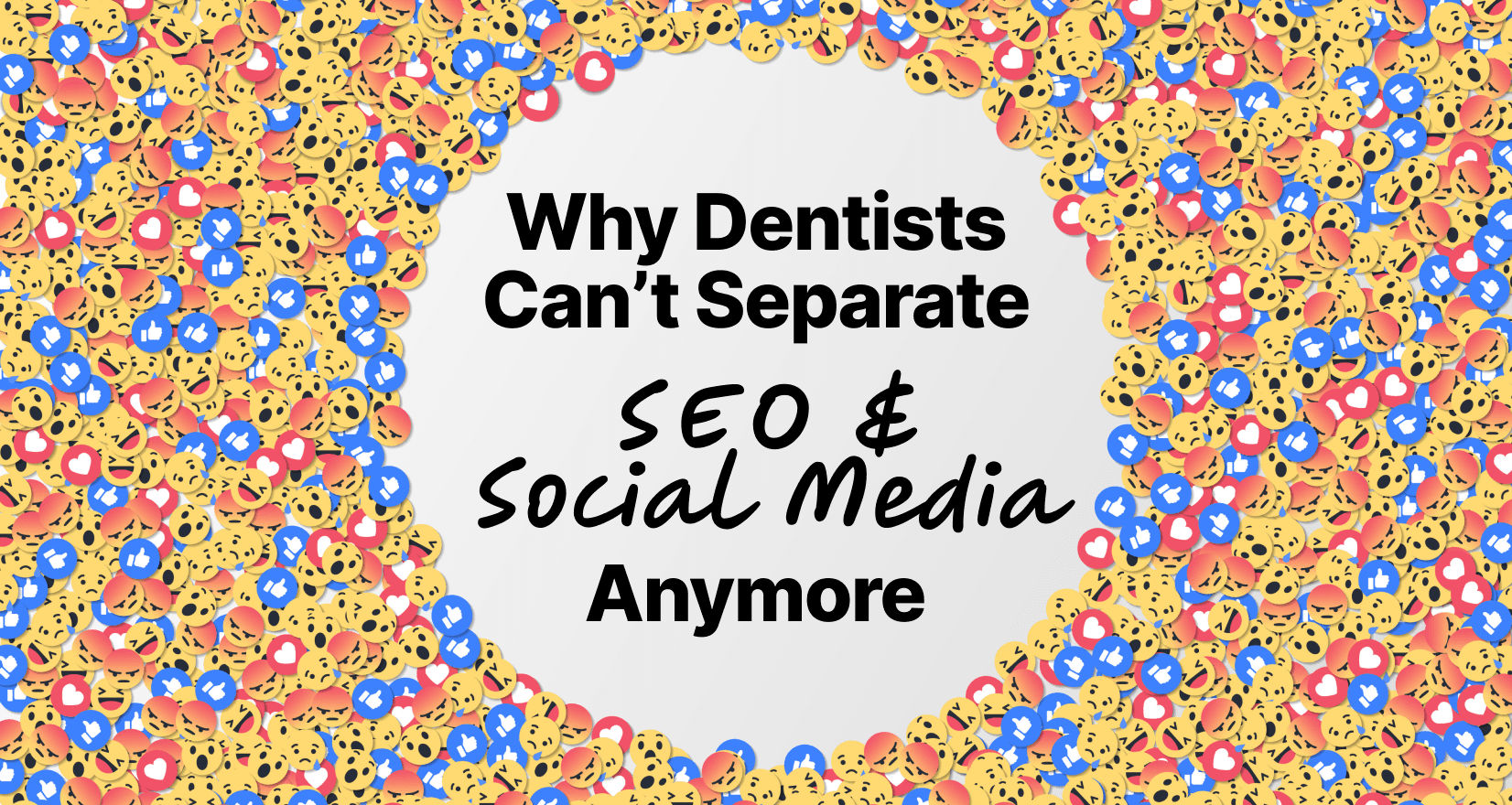
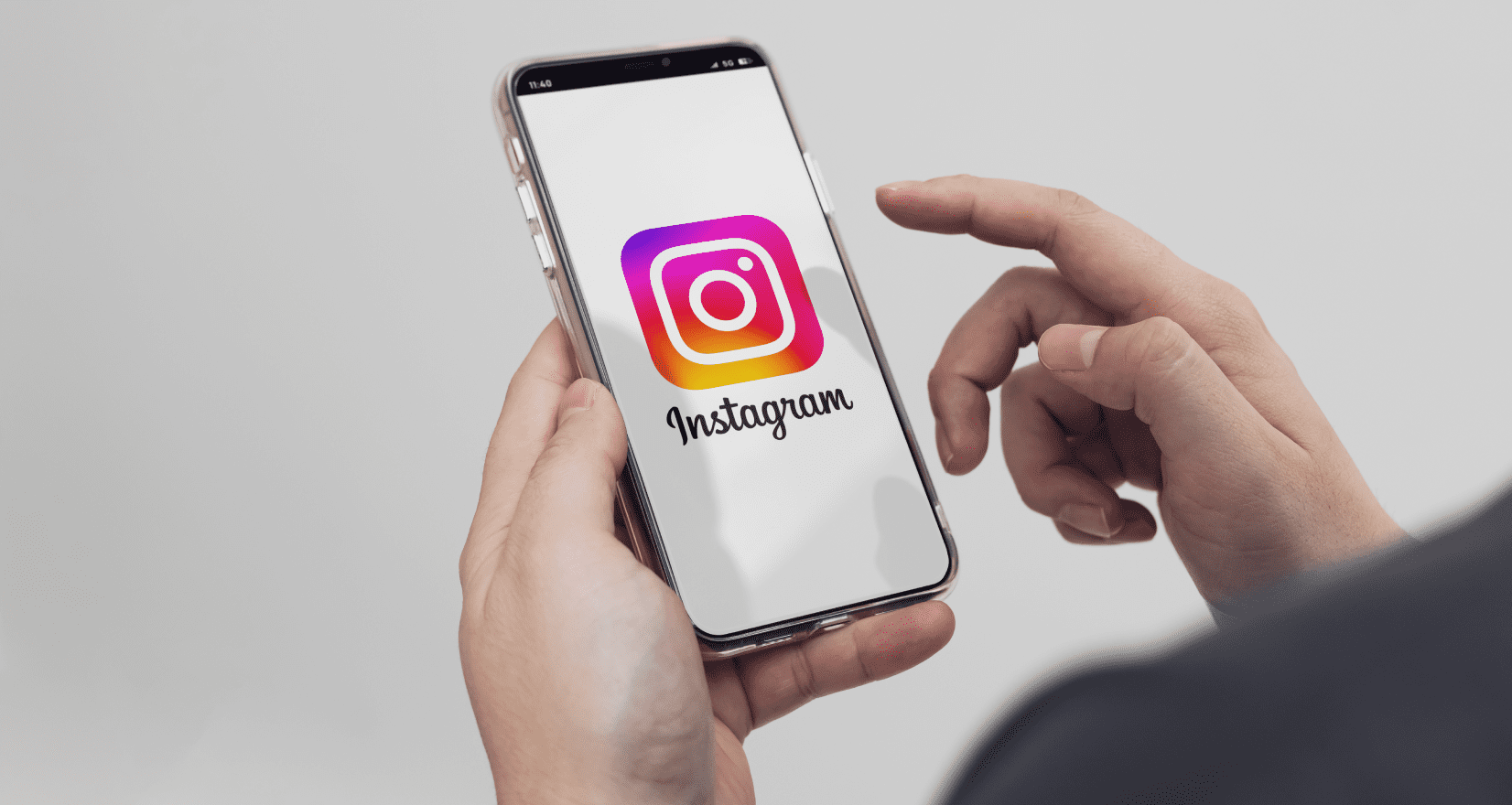
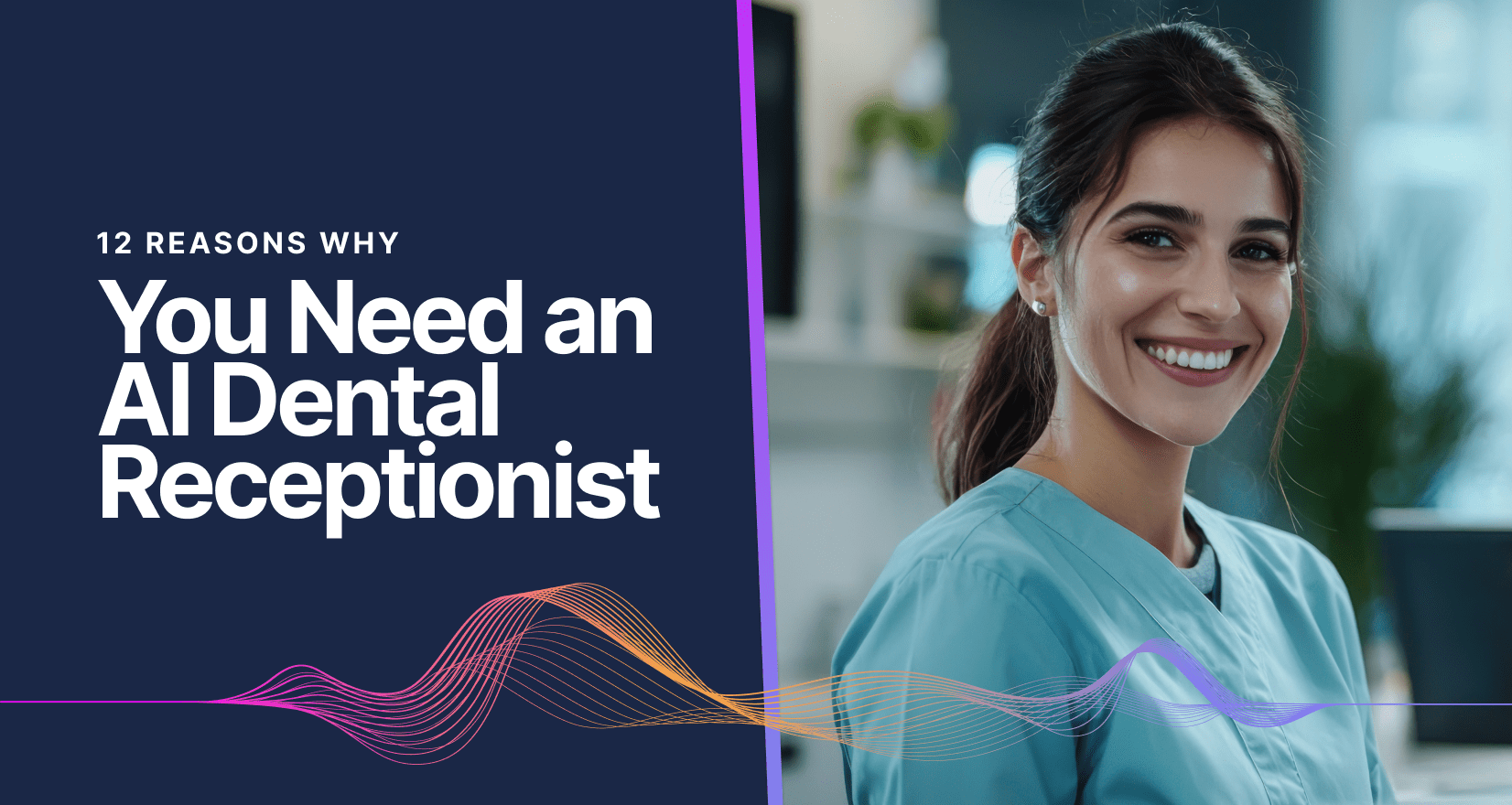
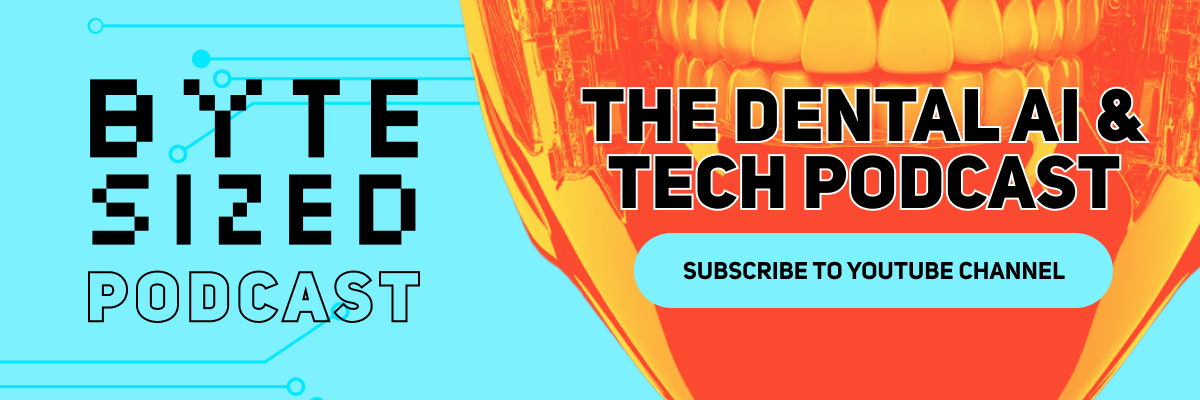




![[Byte Sized Podcast Ep. 23] Frictionless Online Dental Scheduling: Why Your Practice Needs It Now Feat. Colin Ambler - dental ai receptionist - My Social Practice - Social Media Marketing for Dental & Dental Specialty Practices online dental scheduling](https://mysocialpractice.com/wp-content/uploads/2025/12/byte-sized_ep23-100x100.png)



